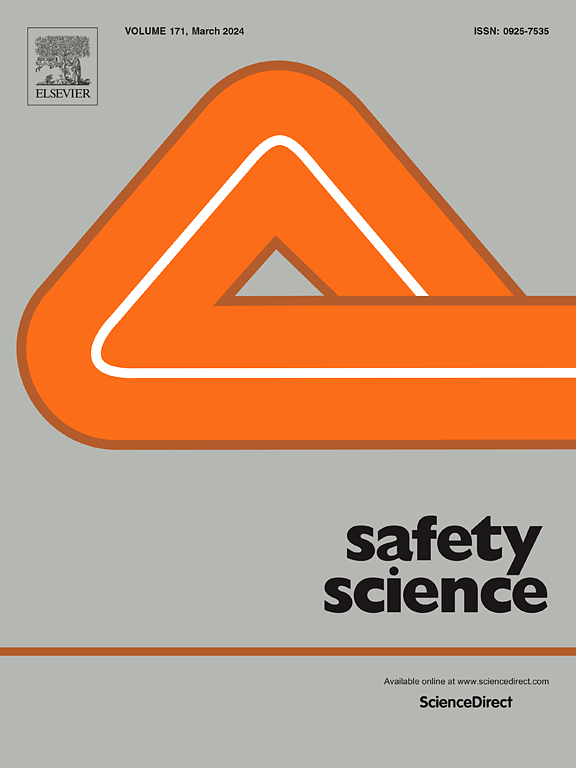Caregivers at risk: How stereotype threat exacerbates the impact of family-to-work conflict on workplace safety
IF 5.4
1区 工程技术
Q1 ENGINEERING, INDUSTRIAL
引用次数: 0
Abstract
Family-to-work stereotype threat (FWST) occurs when employees fear confirming negative stereotypes about workers with caregiving responsibilities. Although a substantial proportion of workers in the U.S. and Italy have caregiving responsibilities (e.g., child or elder care), there is relatively little research on how family-to-work conflict (FWC) may impact employee safety outcomes, nor the mediating and moderating mechanisms involved in explaining these relationships. The current study tests cognitive failures as an explanatory mechanism for the relationship between FWC and workplace accidents and injuries. Additionally, we also test whether employees who experience higher levels of FWST are more vulnerable to adverse safety-related outcomes as a result of FWC. Using lagged data from a sample of N = 196 U.S. employees and cross-sectional data from a sample of N = 814 individuals nested within n = 100 organizations in Italy, results indicate that greater FWC and higher FWST are both related to increased work-related cognitive failures; such cognitive failures are related to more experienced accidents and injuries at work. Notably, within the U.S., these relationships are significantly exacerbated among employees who fear they are confirming negative stereotypes about employees with family obligations. Within Italy, this interaction was only observed among employees of private companies. We discuss our findings in light of the increased blurring of work and life boundaries, and possible legislative and cultural variables explaining differences between the two countries.
看护人面临风险:刻板印象威胁如何加剧家庭与工作冲突对工作场所安全的影响
家庭对工作的刻板印象威胁(FWST)发生在员工害怕确认对有照顾责任的员工的负面刻板印象时。虽然在美国和意大利有相当比例的工人有照顾责任(例如,照顾孩子或老人),但关于家庭与工作冲突(FWC)如何影响员工安全结果的研究相对较少,也没有解释这些关系所涉及的调解和调节机制。本研究测试认知失败作为FWC与工作场所事故和伤害之间关系的解释机制。此外,我们还测试了经历较高FWST水平的员工是否更容易受到FWC导致的不利安全相关结果的影响。使用来自N = 196名美国员工样本的滞后数据和来自N = 100家意大利组织内N = 814名个体样本的横截面数据,结果表明,更高的FWC和更高的FWST都与工作相关的认知失败增加有关;这种认知障碍与工作中更有经验的事故和伤害有关。值得注意的是,在美国,这种关系在员工中明显加剧,他们担心自己证实了对有家庭责任的员工的负面刻板印象。在意大利,这种互动只在私营公司的员工中观察到。我们根据工作和生活界限的日益模糊,以及可能解释两国之间差异的立法和文化变量来讨论我们的发现。
本文章由计算机程序翻译,如有差异,请以英文原文为准。
求助全文
约1分钟内获得全文
求助全文
来源期刊

Safety Science
管理科学-工程:工业
CiteScore
13.00
自引率
9.80%
发文量
335
审稿时长
53 days
期刊介绍:
Safety Science is multidisciplinary. Its contributors and its audience range from social scientists to engineers. The journal covers the physics and engineering of safety; its social, policy and organizational aspects; the assessment, management and communication of risks; the effectiveness of control and management techniques for safety; standardization, legislation, inspection, insurance, costing aspects, human behavior and safety and the like. Papers addressing the interfaces between technology, people and organizations are especially welcome.
 求助内容:
求助内容: 应助结果提醒方式:
应助结果提醒方式:


